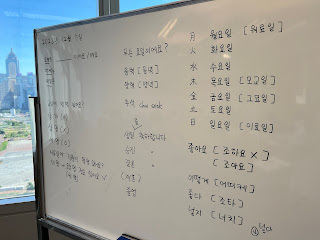한글날
Hangeul Day is an important cultural event celebrated every October 9th in South Korea, honoring the creation and excellence of the Korean alphabet, Hangeul. This day commemorates the historical achievements of King Sejong the Great and his scholars, while also promoting the significance of Hangeul in Korean identity and culture.
Hangeul was developed in the 15th century, specifically in 1443, under the reign of King Sejong the Great. It was officially published in 1446 through a document called "Hunminjeongeum," which translates to "The Correct Sounds for the Instruction of the People." The primary goal of creating Hangeul was to provide a simple and efficient writing system that could be easily learned by the common people, as the existing classical Chinese characters were complex and difficult to master.
Hangeul is known for its scientific design and phonetic structure, making it one of the most accessible writing systems in the world. It consists of 14 basic consonants and 10 basic vowels, which can be combined to form syllables. This simplicity allows for easy learning and usage, contributing to high literacy rates in South Korea.
Hangeul Day is marked by various events and activities across the country. Many cities host festivals featuring traditional performances, exhibitions, and workshops focused on Hangeul. Schools and universities often organize special classes and activities to teach students about the history and significance of Hangeul. Additionally, various contests, such as Hangeul writing competitions and quizzes, are held to engage people of all ages in learning more about the alphabet.
In recent years, Hangeul has gained international attention, especially with the rise of Korean pop culture, including K-pop and Korean dramas. This global interest has led to an increased desire among foreigners to learn Hangeul, making Hangeul Day a perfect opportunity to promote the alphabet worldwide.
Hangeul Day is not just a celebration of a writing system; it is a day to reflect on the cultural heritage and identity of the Korean people. It serves as a reminder of the importance of language in shaping a nation’s history and culture. For anyone interested in Korean culture, participating in Hangeul Day activities or learning about Hangeul can be a rewarding experience that deepens their understanding of Korea and its people.
한글날은 매년 10월 9일에 한국에서 기념되는 중요한 문화 행사로, 한국어의 알파벳인 한글의 창제와 우수성을 기립니다. 이 날은 세종대왕과 그의 학자들이 이룬 역사적 업적을 기념할 뿐만 아니라, 한국의 정체성과 문화에서 한글의 중요성을 알리는 날입니다.
한글은 15세기, 특히 1443년에 세종대왕의 통치 아래에서 개발되었습니다. 1446년에는 "훈민정음"이라는 문서를 통해 공식적으로 발표되었습니다. 한글을 만들었던 주된 목적은 복잡한 한자 대신, 일반 사람들이 쉽게 배울 수 있는 간단하고 효율적인 문자 체계를 제공하는 것이었습니다.
한글은 과학적인 설계와 음소 구조로 유명하며, 세계에서 가장 접근하기 쉬운 문자 체계 중 하나로 평가받고 있습니다. 14개의 기본 자음과 10개의 기본 모음으로 구성되어 있으며, 이들을 조합하여 음절을 형성할 수 있습니다. 이러한 단순함 덕분에 한글은 쉽게 배우고 사용할 수 있어 한국의 높은 문해율에 기여하고 있습니다.
한글날은 다양한 행사와 활동으로 기념됩니다. 많은 도시에서 전통 공연, 전시회, 한글 관련 워크숍이 열리는 문화 축제가 개최됩니다. 학교와 대학에서는 한글의 역사와 중요성을 가르치는 특별 수업과 활동을 조직합니다. 또한, 한글 쓰기 대회와 퀴즈와 같은 다양한 경연이 열려 모든 연령대의 사람들이 한글에 대해 더 많이 배우도록 유도합니다.
최근 몇 년 동안 한글은 K-pop과 한국 드라마의 인기로 인해 국제적인 관심을 받게 되었습니다. 이러한 글로벌 관심은 외국인들이 한글을 배우고자 하는 욕구를 증가시켰으며, 한글날은 전 세계적으로 한글을 홍보할 수 있는 좋은 기회가 되고 있습니다.
한글날은 단순한 문자 체계의 기념일이 아니라, 한국 민족의 문화유산과 정체성을 되새기는 날입니다. 언어가 한 나라의 역사와 문화를 형성하는 데 얼마나 중요한지를 상기시켜 줍니다. 한국 문화에 관심이 있는 사람이라면 한글날 행사에 참여하거나 한글에 대해 배우는 것이 한국과 그 사람들에 대한 이해를 깊게 하는 보람 있는 경험이 될 것입니다.










































.png)




